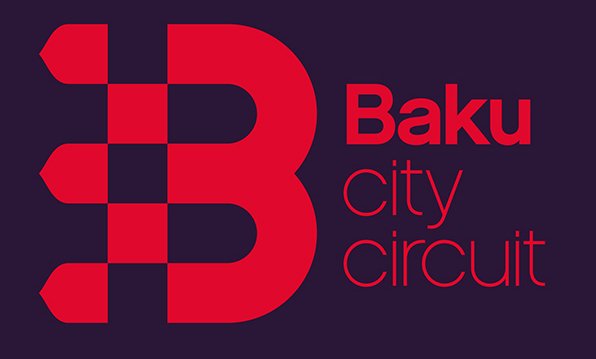-
Address:Shusha, AZ5800
The most important feature of the town-building art of Azerbaijan in XVIII century, connected with political-social situation of the country was formation of the khanate centers. Among newly formed of the khanate centers, the capital of Karabakh khanate Shusha city is excelled by its unusual nature and superior strategic parameters. The founder of Karabakh khanate Panahali Khan Sarıca Cavanshir started to construct a reliable residence for himself after gaining independence in 1747. First, he built Bayat (1748) and Shahbulagi (1752) castles, but they did not comply with the defense demands of that time, therefore he decides to build a new town-tower kind of a construction. Shusha area was elected for the new residence. The Shusha Castle construction date is not known yet. Investigator E. Avalov found very valuable information from Russian sources of XIX century concerning the Shusha Castle construction date. It is mentioned in a stone inscription on a wall of the Juma Mosque that Shusha city was founded by Penah Khan in 1167 according to Hegira calendar. This stone inscription had been taken away in the time of next reconstruction works. According to that lost inscription, the foundation of Shusha Castle had been put in 1753. The highest place of Shusha area from the sea level is
1600 meters and lowest place is 1300 meters. This high upland area has been surrounded with deep precipices which go down to Dashalty and Xelfeli River beds. Because of the opportunities of natural defense, only the north-east was weak and needed a construction of castle walls. Thus, in the result of electing a very suitable area according to strategic demands of the time, it was possible to create a strong defense city on a wide territory (350 hectares) with less expense. In the first years of construction, the name of city-tower was “Panahabad” according to the name of the founder. But after while, its name was substituted by “Shusha Castle” name, which was suitable to natural form of the territory where it was settled. Shusha was the best monumental city of Azerbaijan among the khanate centers of that time, which complied with the conception of "city-tower". "It was constructed on an inaccessible rock" (Q. Keppel). Shusha structure was like ancient Midia city-castles, which are known from wall drawings related to IX century B.C. After its construction, Shusha withstood a number of strong attacks and blockades; it was the main castles of Karabakh and according to this function, this city has always been known as "Castle" among people. Shusha Castle used to have four doors according to the new town-building tradition of the Middle Age. The main castle door has been opening towards the Ganja road in the north; therefore it was called the Ganja door. But Erevan door used to connect Shusha Castle with west regions of Azerbaijan. Two other doors of Shusha Castle were useful for connecting surrounding mountain villages. The inner tower of Shusha was located on a big hill near the Ganja door. Historian Mir Mehdi Khazani writes that the inner tower built by Panakh Khan "is a palace which reminds a small castle with its walls and towers" and the Khan had built a "nice palace" on a hill near his residence for his eldest son Ibrahim Khan. From the plans that Russian engineers drew it is clear that there was a complex in the inner tower consisted of palace buildings, court-house, and other buildings; the inner tower had a complex plan according to the relief of the hill. As many other monuments of Shusha city, this palace complex also had been destroyed by Russian occupants. The palace complex had been surrounded with walls which had round towers. Quadrangle shaped towers with inner gardens had been built in superior strategic places of the castle. These towers had been places where defense regiment had been settled in the inside of the castle. The towers built in the edges of the castle and on high places, had been playing the decisive role in keeping the city circle under control, in defining the direction and character of the attacks and organizing the defense. Only two of them, the Pahakh Khan tower and Qara Boyuk Khanim’s tower remained. According to the inscription in the entrance of the Qara Boyuk Khanim’s tower, the construction date is related to 1768. Determining the dynamic landscape of the place, tower walls and the order of the towers played the decisive role. Because the tower was built according to the relief, the tower walls had a complex form of broken line. The towers had been built jut out of the basic walls and this considerably strengthened the defense of the wall bottom. The level of the castle walls and towers’ silhouette differ much. Castle walls, towers and fortifications joined with woody and rock landscape of Shusha were creating a magnificent view. Shusha used to be a strong city; it also had been one of important political-economic and cultural centers of Azerbaijan in XVIII-XIX centuries. The first nine living quarters of Shusha Castle are called Lower quarters because they were built in lower parts of the present city with relatively silent relief. In the time of Ibrahim Khan’s rule (1759-1806) eight quarters had been formed in the upper part of the city. Twelve quarters had been constructed in the west part of the city which has a harder relief, mostly after the Russian occupation (1805). The names of the Lower quarters were Qurdlar, Seyidli, Culfalar, Quyuluq, Derdler qurdu, Haci Yusifli, Dord Chinar and Chol Qala (Cuhudlar). The names of the Upper quarters were Mardinli, Saatli, Kocharrli, Mamayi, Xoja Mircanli, Demirchi, Hamam qabaqı and Teze mehelle. Narrow, crooked streets separate from one another Mehrulu, Qazanchili, Əklisu, Chillebord, Dere quarters. Beautiful nature, walls built from white stone and quarters settled in the terrases formed expressive views. In the next stages of its development no fundamental reconstruction and construction works had been carried out, therefore Shusha had kept historically formed architecture-planning structure. As other Middle Age cities of Azerbaijan, quarters of Shusha also consisted of the closed system house buildings with gardens. The majority of Shusha houses had two-stores and was constructed with stones. Traditional Shusha houses with stained glass windows of big verandas (tracery) and many-colored ornaments on the walls did not differ from houses of other regions of Azerbaijan. A few valuable specimens of these houses have remained: Haji Qulular’s House, Natavan’s House, Ugurlu Bey’s House, Asad Bey’s House, Mehmandarov’s House etc. Khan and bey palace kind houses differed among living houses by rich art-architecture structure. Unfortunately, the majority of these buildings have not reached our time. Apart from the living houses, there was a local public centre in each of the Shusha quarters. This centre consisted of buildings in the surroundings of a square of the quarter: mosque, religious school, and bath-house, shop and spring. The outward look of rectangle shaped quarter Mosques (Julfalar, Зuxur, Haji Yusifli etc) of Shusha did not differ from living houses, but the interiors totally complied with the demands of religious architecture. Quarter mosques (Chol Qala, Teze, Saatli, Mamayi) had three parts in the worship hall and were distinct with more perfect structure plan. The majority of quarter Mosques have a special room for muezzin on the ruff; whereas Saatly Mosque had a minaret with brick patterned ornament. The most monumental Shusha Mosque is the Upper Govher Mosque, built by great architect of XIX century Karbalayi Sefi Khan Karabakhi in 1883. On the same place where Ibrahim Khan had ordered the construction of a mosque in 1768, his daughter Govher aqa had ordered the construction of a monument which is the great Juma Mosque of Shusha. The Juma Mosque is the dominant of the main Shusha Square. There is an architecture complex in the surroundings of the Lower Govher aga Mosque in 150 meters distance towards north-east from the Shusha Square. A mosque, a religious school, shops and living houses had been included to complex. The Lower Govher aga Mosque constructed by architect Karbalayi Sefi khan in 1868-1870, reminds Juma Mosques of Aghdam and Shusha according to its general structure plan. The only difference is that two minarets of the Lower Govher aga Mosque were placed not in the front facade of the Mosque, but in the corners of the back facade. All quarter Mosques of Shusha had been constructed with the participation of the Karbalayi Sefi khan Karabakhi, therefore, general architecture style is felt in all of them. Shusha city had been taking a very active part in international trade in the XVIII-XIX centuries. Trade operations that it carried with the countries of the east and west caused arising of trading centre developed in the city system. The Shusha Square had been the center of the Shusha city plan and the center of trade complex. Three trade street of Shusha branches out from this Square: Rasta market to north, Lower market to the east; Shaytan market to south. There are shops, main religious buildings, caravanserai of Shusha and trade areas in these trade streets. Shusha city, constructed by Karabakh Khan Panahali Khan in the ancient living place, is a rare monument of town-building culture of late Middle Age of Azerbaijan and a live encyclopedia of the architecture of Karabakh.
Shusha city had been declared State History-Architecture Reservation of the Azerbaijan Republic in 1988.



.png?v=DqKtbngFu8-eBM77oNP77E2SV2gNF4_tUk0Y9IcK12s)

















